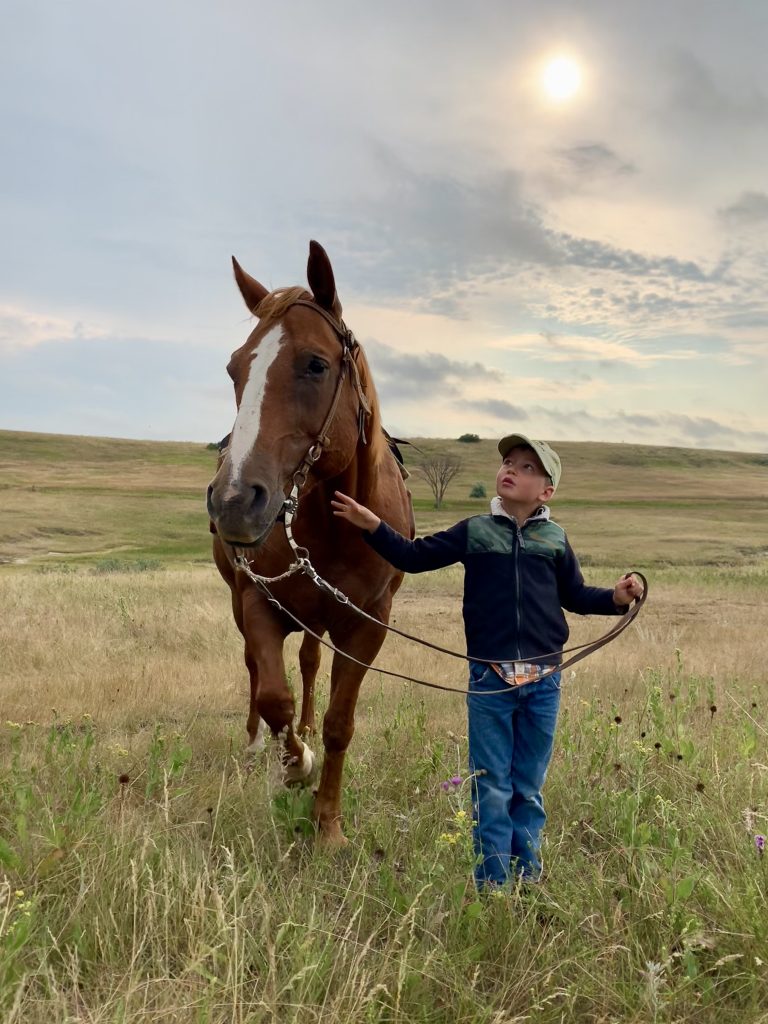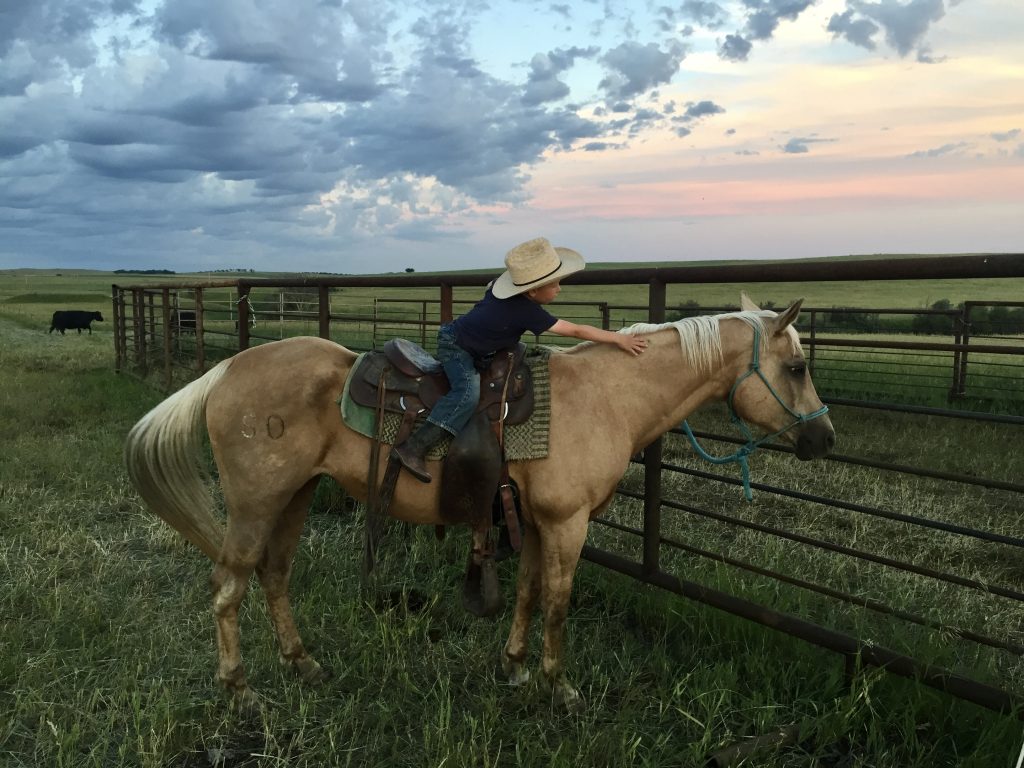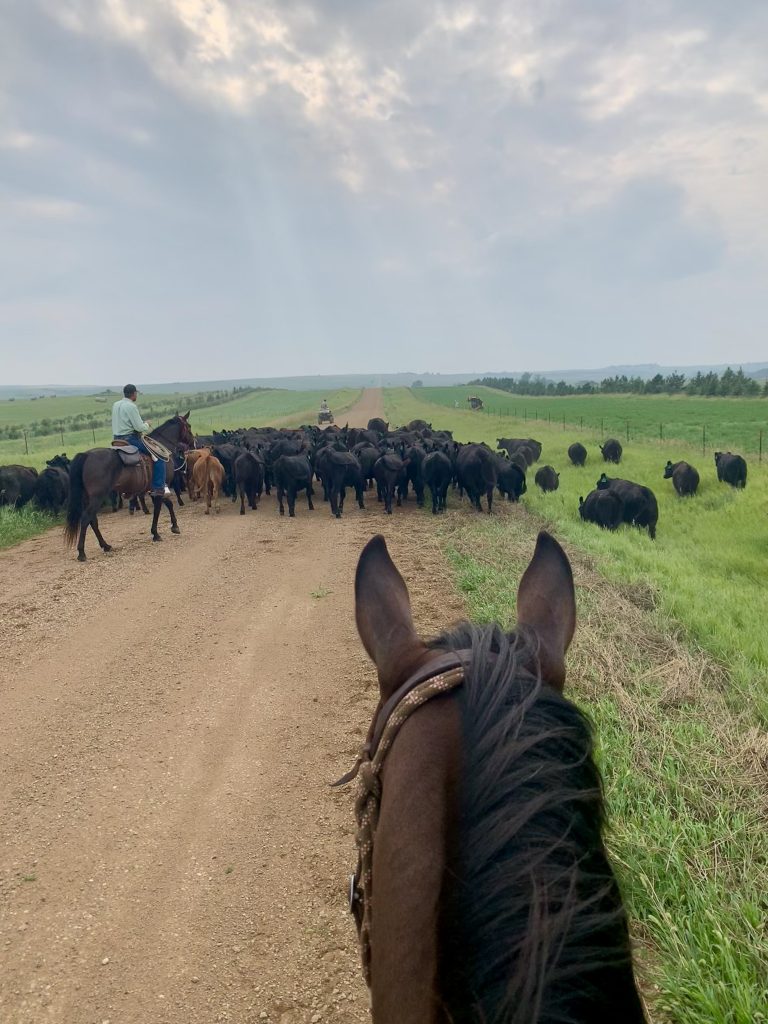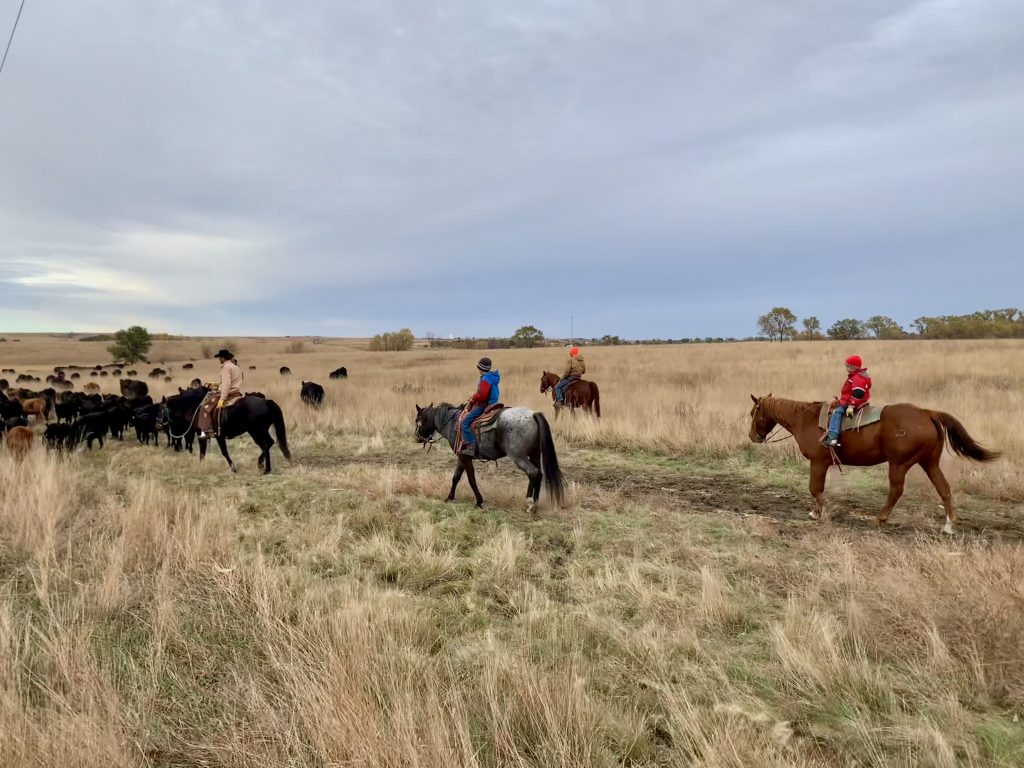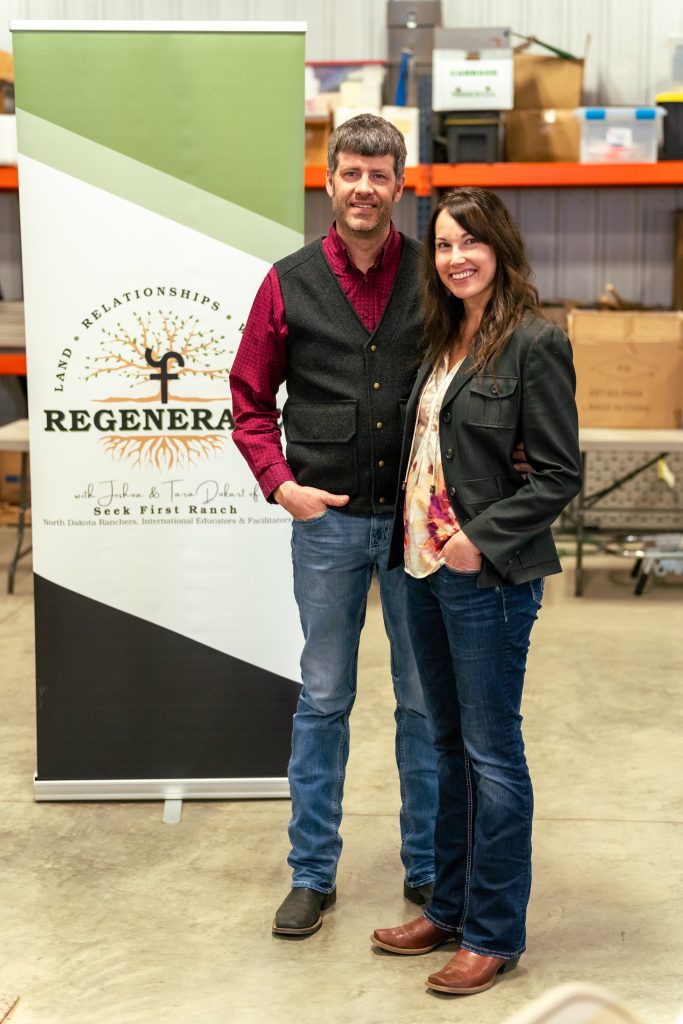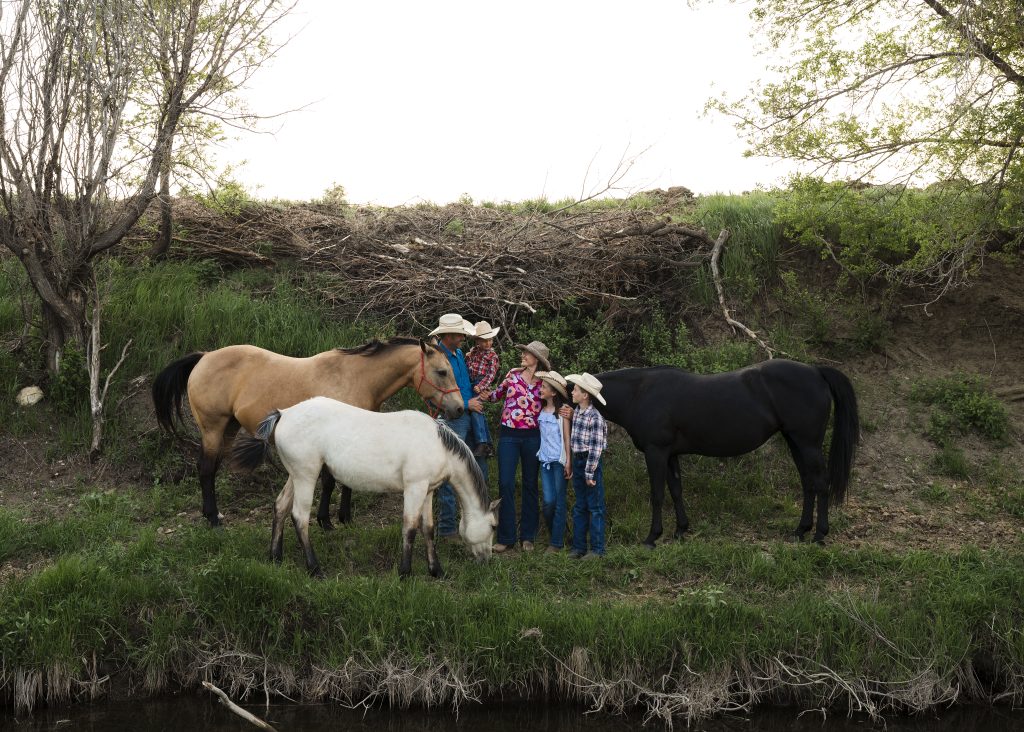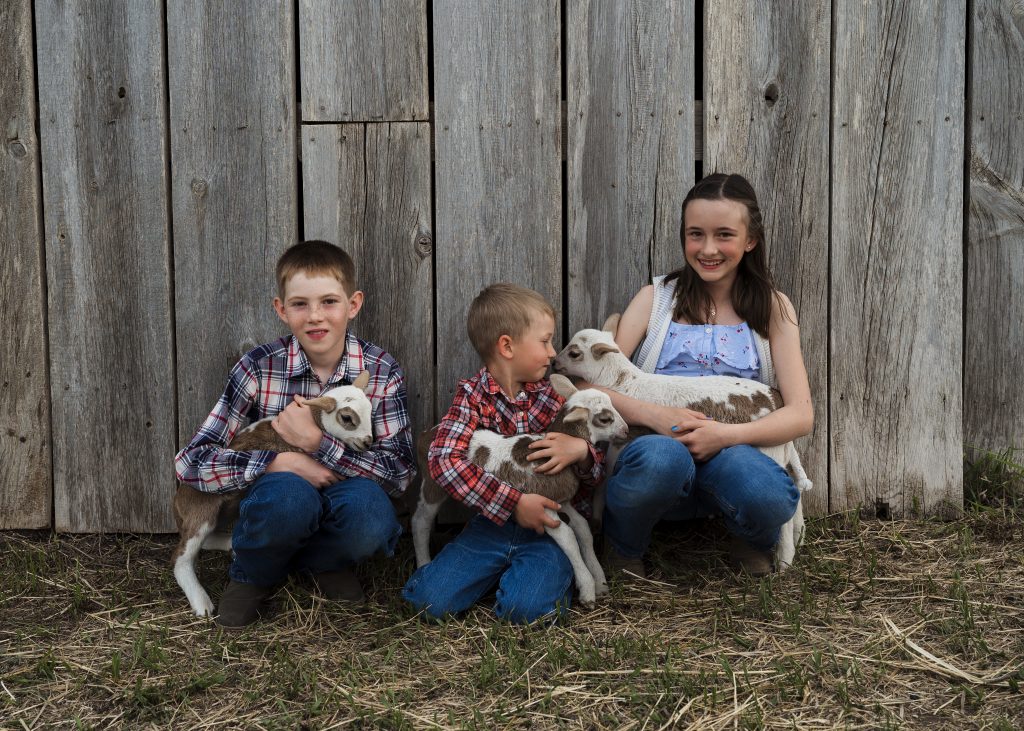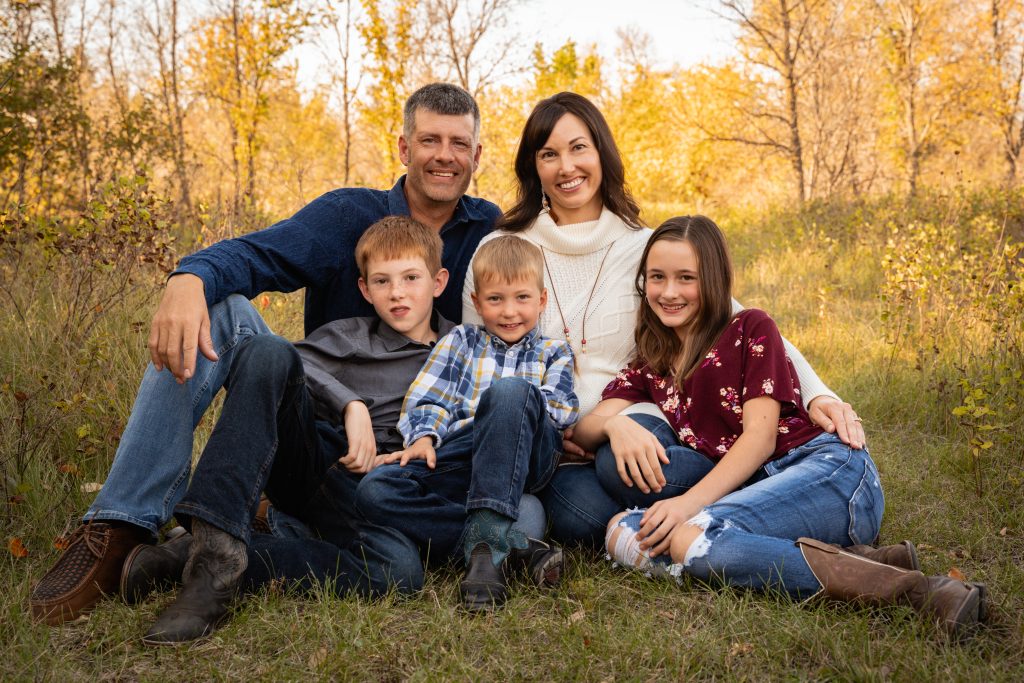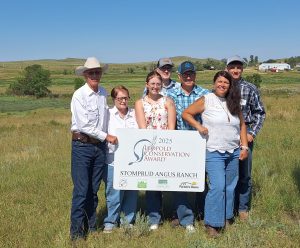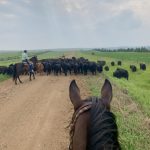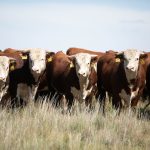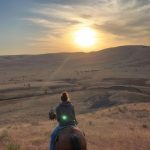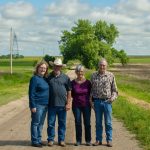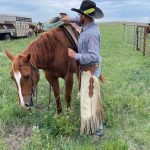Fall Cattle Journal 2025 | Seek First Ranch: Regenerative practices point the way
Joshua and Tara Dukart’s story is a Great Plains love story, and no ordinary plains romance at that. The North Dakota couple’s tale begins on a two acre lot in a cul de sac with plans for a sensible suburban life. But God had plans of His own, the couple found, and so the faith-based Dukarts listened. Heeding the call of the divine meant returning Joshua to his roots and introducing Tara to a whole new way of being.
Cultivating a curious mindset
Today the Dukarts ask what they call “the right questions” about ranching, raising food, and raising kids. In fact, it’s the kids who provided the inspiration for the move back to the family ranch itself, and it’s the kids who continue to supply the raw material for questioning the status quo.
“We’ve taken a playbook from our kids, and everybody else’s kids, and that’s means we question everything,” Joshua said.
Regenerative practices
These days, both questions and answers come from the movement known as regenerative agriculture. More than mere conservation, regenerative agriculture can be defined as a holistic approach to farm or ranch management that rebuilds, restores, and enhances. The Dukarts are certified educators with Holistic Management International (HMI), a non-profit that’s foundational to the regenerative movement.
HMI Executive Director Wayne Knight said the Dukarts are among 75 educators who can train others in the ways of regenerative ag that re-see such criteria as soil, water, grasslands, nutrients, biodiversity, grazing animals, even predators.
“We are better off working with nature instead of trying to dominate it,” Knight said
A visit to the Dukarts’ Seek First Ranch (https://www.seekfirstranch.com) means taking in rural vistas populated with cows, sheep, and horses as well as iconic native grasses. The Seek First Ranch web site offers visitors a tour de force of color, graphics, blog content, podcasts and more. It can be said that the site enjoys a biodiversity all its own.
Raising grass fed beef and hair sheep, the ranch employees three generations invested in regenerative practices. Premium meats are marketed and sold from the ranch directly as well. Both Joshua and Tara have their hands in outreach and education, creating community with a look to the future.
Asking the right questions
It has been said that no man is an island, and to the Dukarts, no question is an island either. Large or small, context matters and the key concept is relationship. How are the many moving parts of a ranch in relationship with the other parts, and in relationship with ecosystems and with the planet as a whole?
“We tend to think about our operations in terms of harmony,” Tara said.
Solutions may be straightforward, but the process of making the right choice rarely is.
“We try to ask well rounded insightful questions, even on a daily basis, that get to the heart of the matter rather than cookie cutter answers,” Joshua said.
It took some time to make the change from traditional thinking to current practice, but the transformation is complete.
“Thinking of operations as relationship-based is now a habit,” Josh said.
Harvesting the fruits of their labors
The Dukarts may not be doing anything exceptional in the world of regenerative ranching, but what they are doing they are doing well enough. They are also well satisfied with the results. Understanding how their particular set of choices is working on their unique piece of property is part of their success.
“Over the years we introduced no till practices, crop rotation, grazing animals. We used cover crops. What we realized in time as our operation expanded is that we would be best off if we planted back to perennial grasses,” Joshua said.
The final pasture was planted last year. Use of farm machinery is limited by design.
“We harvest with cattle and sheep, not combines and hay machines,” Joshua said.
Reduced chemical inputs are also a priority. The goal is to one day be chemical free.
Given the couple’s background, Joshua is the soil guy and Tara is the people gal.
“Plants and animals are somewhere in between and that’s what makes it all work,” Joshua said.
When out and about, each Dukart advocates for the ranch and for regenerative practice.
“I’m the one who has the conversation with people at the sale barn or the feed store or the grain elevator,” said Joshua. “Tara is focused on the healthy food side. The concepts are similar, but the questions are different.”
No ranch is a paradise
Like any other outfit, Seek First Ranch encounters obstacles, but the operators gain confidence from their approach.
“It feels empowering to do things this way,” Joshua said. “We are dealing with lots of things all the time. Weather, markets, global trends; the interruptions and distractions that happen on a daily basis. We feel empowered by our paradigm. We feel we have influence in how things play out.”
Regenerative ranching leaves room to pivot, Joshua said. “We still experience decision fatigue or feeling overwhelmed at times. But overall, we don’t feel stuck in a corner.”
The Dukarts’ experience, Knight said, typifies the passion of other educators with Holistic Management International (https://www.holisticmanagement.org).
“When people first come to us to learn, they want an education. They become so enthusiastic, they want to become educators themselves,” he said.
Hidden inspiration
Some time ago, when the Dukarts learned that their firstborn child needed a special diet due to a serious health issue, the devastating news had the new patents reassessing healthy food for the whole family. That research became the reason behind Seek First Ranch. Neither Dukart has ever looked back with regret.
The Dukarts believe they are doing right by their family and also right by the land. Regenerative ranching provides the family with wholesome food, wholesome living, and an unexpected harvest of self-reliance.
“In a word,” said Tara, “regenerative ranching feels like freedom.”
